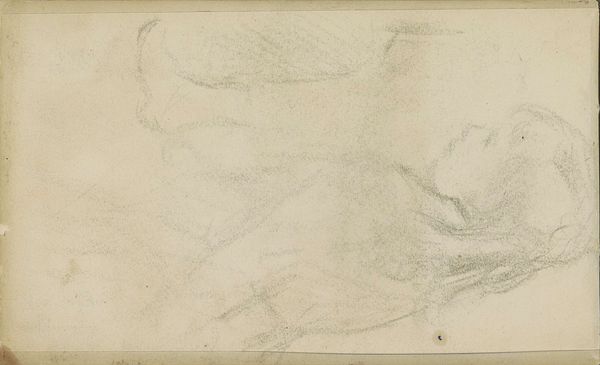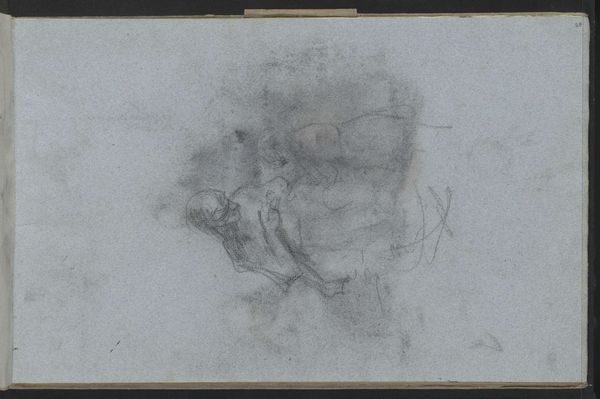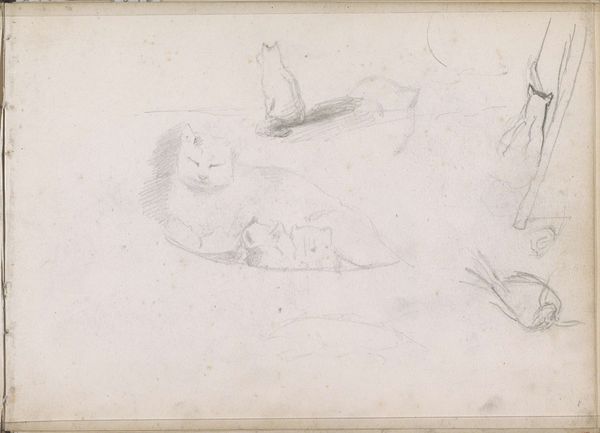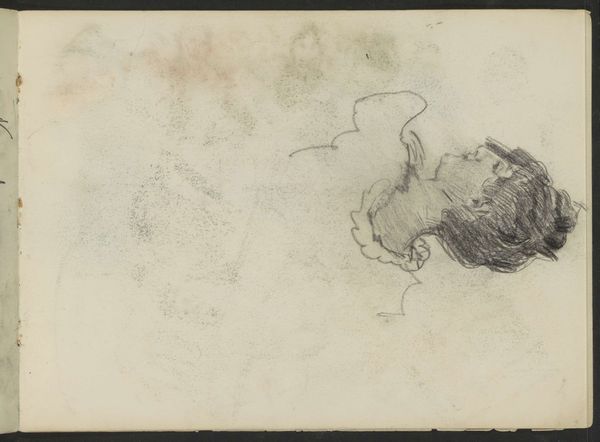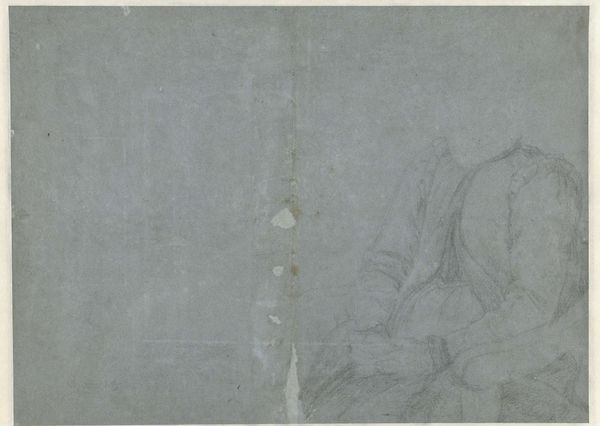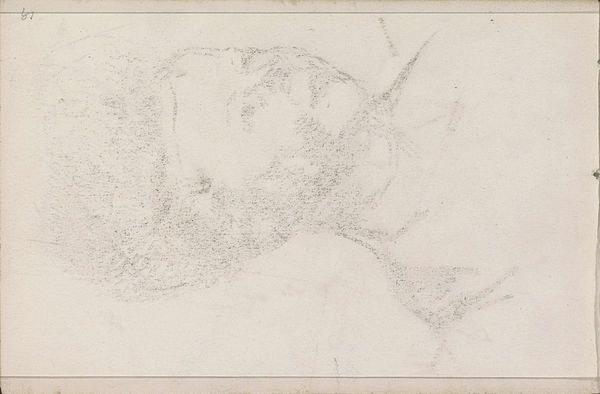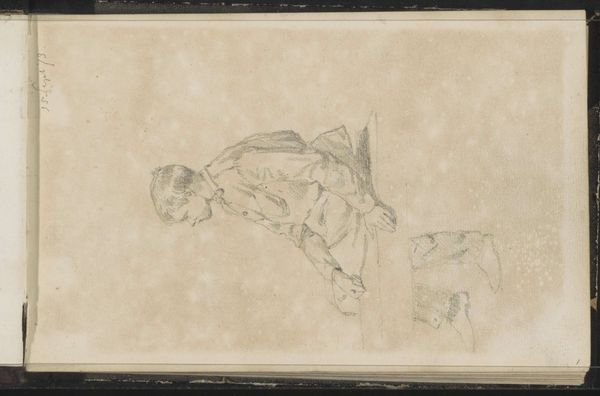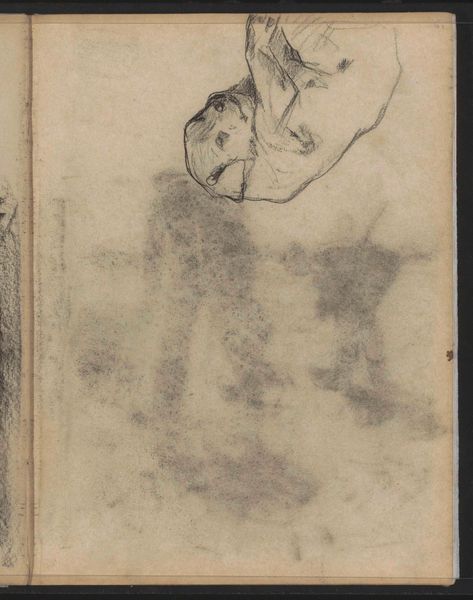
drawing, paper, dry-media, pencil, graphite
#
drawing
#
pencil sketch
#
paper
#
dry-media
#
pencil
#
graphite
#
realism
Copyright: Rijks Museum: Open Domain
Curator: I see an intriguing ethereality, a ghostlike presence taking shape. Editor: That’s quite apt. What we have here is a piece called "Abklatsch van de krijttekening op blad 9 verso," created by Johanna van de Kamer sometime between 1890 and 1922. It's rendered in pencil and graphite on paper. Curator: The softness of the graphite gives it this fleeting quality, as if it might fade away before our eyes. It's hard to discern the subject—a figure perhaps? And the texture! It’s almost velvety. I wonder what significance the artist tried to project with this work. Editor: It appears to be a rubbing or transfer—’Abklatsch’ in German. These techniques often result in a mirror image. Rubbings can sometimes possess symbolic properties, used to record and transfer sacred or important images. Curator: A transfer implies a preservation of something already existing, not necessarily a creation, it adds layers to interpretation, which might show more than one significance in relation to cultural preservation practices, something to transmit through symbols and meaning. It can create interesting parallels and differences through this technique. Editor: It creates an interesting tension, this sense of copying and the spontaneous marks. Looking at the tonal values and mark-making, I am intrigued by the limited value range. This restrained palette emphasizes texture and edge. Notice how areas dissolve into abstraction? What impact do you think this has on the observer? Curator: I think the dissolving creates an intimacy with an emotional experience of remembering, or the suggestion of looking at something half forgotten. Memory itself functions like this—fragments, echoes of what once was. Perhaps this work functions as a memento, a quiet meditation. Editor: I agree. It makes us consider what we value preserving through this reproduction, and the ways in which its qualities both communicate with the present, but reflect something further. Curator: Absolutely. What started as an elusive, undefined form becomes quite clear that contains far more cultural significance.
Comments
No comments
Be the first to comment and join the conversation on the ultimate creative platform.

